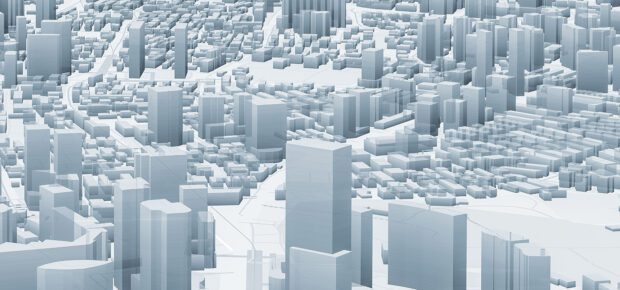June 29, 2023
3D printing, also known as additive manufacturing (AM), has come a long way since the technology was initially conceived decades ago.
And in more recent years, 3D printing has increased in popularity and prominence, with open source further democratizing the technology – major companies and individual enthusiasts alike now deploy the technology to construct everything from car parts to prosthetics to gadgets and gizmos.
But one of the technology’s best applications might be its least heralded – construction.
“3D printing is a rapidly developing technology that has the potential to revolutionize construction,” said Shailaja Patil, IEEE Senior Member. “By allowing the rapid and efficient production of complex construction components, 3D printing enables the creation of highly configurable structures both on and off-site.”
3D Printing and Construction – A Match Made in Heaven
The technique usually involves materials that are commonly used in construction – like concrete.
IEEE Senior Member Manpreet Singh Manna describes 3D printing as “a process that involves building a 3D project layer by layer, using a computer-controlled printer.”
And in the construction industry, 3D printing is particularly beneficial, according to Singh Manna, as it has opened up a new world of possibilities for architects, engineers and builders.”
Additionally, the environmental and financial benefits of 3D printing in construction mustn’t be overlooked – after all, the construction of buildings accounts for 11% of global carbon emissions, according to the World Green Building Council.
“3D printing has enabled the construction industry to enhance sustainability while simultaneously cutting expenses and minimizing construction time,” said Patil. “The technology is truly a promising advancement in construction practices, with some companies even exploring the potential of building with alternative, and more eco-friendly, such as mud, recycled plastic and bamboo.”
According to Patil, 3D printing is utilized in construction in various ways, including:
- Component Prefabrication: Manufacturing components off-site and then transporting them where needed, reducing construction time and costs.
- Formwork Printing: Fabricating intricate shapes and designs to create templates or molds, facilitating the casting of structures to help to reduce the need for traditional formwork, which can be time-consuming and costly.
- On-site Manufacturing: Using a sizable 3D printer at a construction site to develop an entire design, such as a building, which is often faster and more cost-effective than traditional construction methods.
- Concrete Printing: Printing concrete in layers to create various, oftentimes complex, structures, reducing the amount of work required to develop certain shapes and designs.
When it comes to large construction projects, AM can be leveraged at scale to create entire buildings – and even infrastructure.
“Large-scale 3D printers can be leveraged to develop components like walls, floors and roofs for assembly on-site,” said Singh Manna. “This approach has many advantages when it comes to homebuilding, including faster construction times and reduced costs, but it also applies to physical infrastructure – in fact, this method was utilized in Amsterdam and Mumbai to construct pedestrian bridges in the past few years.”
And as the underlying AM technologies – design software, robotics and automation, and materials science – improve, we’ll become capable of printing larger, more complex structures with greater precision and efficiency.
“While 3D printing is not yet ubiquitous in construction, it is rapidly increasing in popularity – and it’s no wonder why,” said Singh Manna.
Patil agrees.
“The future of 3D printing in construction and industry is exciting and full of possibilities.”





 Meaningful Momentum or Running in Place?
Meaningful Momentum or Running in Place? AI Through Our Ages
AI Through Our Ages Liquid Infrastructure: Our Planet's Most Precious Resource
Liquid Infrastructure: Our Planet's Most Precious Resource The Impact of Technology in 2025
The Impact of Technology in 2025 Quantum and AI: Safeguards or Threats to Cybersecurity?
Quantum and AI: Safeguards or Threats to Cybersecurity? Why AI Can't Live Without Us
Why AI Can't Live Without Us Bits, Bytes, Buildings and Bridges: Digital-Driven Infrastructure
Bits, Bytes, Buildings and Bridges: Digital-Driven Infrastructure Impact of Technology in 2024
Impact of Technology in 2024 Emerging AI Cybersecurity Challenges and Solutions
Emerging AI Cybersecurity Challenges and Solutions The Skies are Unlimited
The Skies are Unlimited Smart Cities 2030: How Tech is Reshaping Urbanscapes
Smart Cities 2030: How Tech is Reshaping Urbanscapes Impact of Technology 2023
Impact of Technology 2023 Cybersecurity for Life-Changing Innovations
Cybersecurity for Life-Changing Innovations Smarter Wearables Healthier Life
Smarter Wearables Healthier Life Infrastructure In Motion
Infrastructure In Motion The Impact of Tech in 2022 and Beyond
The Impact of Tech in 2022 and Beyond Cybersecurity, Technology and Protecting Our World
Cybersecurity, Technology and Protecting Our World How Technology Helps us Understand Our Health and Wellness
How Technology Helps us Understand Our Health and Wellness The Resilience of Humanity
The Resilience of Humanity Harnessing and Sustaining our Natural Resources
Harnessing and Sustaining our Natural Resources Creating Healthy Spaces Through Technology
Creating Healthy Spaces Through Technology Exceptional Infrastructure Challenges, Technology and Humanity
Exceptional Infrastructure Challenges, Technology and Humanity The Global Impact of IEEE's 802 Standards
The Global Impact of IEEE's 802 Standards Scenes of our Cyber Lives: The Security Threats and Technology Solutions Protecting Us
Scenes of our Cyber Lives: The Security Threats and Technology Solutions Protecting Us How Millennial Parents are Embracing Health and Wellness Technologies for Their Generation Alpha Kids
How Millennial Parents are Embracing Health and Wellness Technologies for Their Generation Alpha Kids Space Exploration, Technology and Our Lives
Space Exploration, Technology and Our Lives Global Innovation and the Environment
Global Innovation and the Environment How Technology, Privacy and Security are Changing Each Other (And Us)
How Technology, Privacy and Security are Changing Each Other (And Us) Find us in booth 31506, LVCC South Hall 3 and experience the Technology Moon Walk
Find us in booth 31506, LVCC South Hall 3 and experience the Technology Moon Walk Virtual and Mixed Reality
Virtual and Mixed Reality How Robots are Improving our Health
How Robots are Improving our Health IEEE Experts and the Robots They are Teaching
IEEE Experts and the Robots They are Teaching See how millennial parents around the world see AI impacting the lives of their tech-infused offspring
See how millennial parents around the world see AI impacting the lives of their tech-infused offspring Take the journey from farm to table and learn how IoT will help us reach the rising demand for food production
Take the journey from farm to table and learn how IoT will help us reach the rising demand for food production Watch technical experts discuss the latest cyber threats
Watch technical experts discuss the latest cyber threats Explore how researchers, teachers, explorers, healthcare and medical professionals use immersive technologies
Explore how researchers, teachers, explorers, healthcare and medical professionals use immersive technologies Follow the timeline to see how Generation AI will be impacted by technology
Follow the timeline to see how Generation AI will be impacted by technology Learn how your IoT data can be used by experiencing a day in a connected life
Learn how your IoT data can be used by experiencing a day in a connected life Listen to technical experts discuss the biggest security threats today
Listen to technical experts discuss the biggest security threats today See how tech has influenced and evolved with the Games
See how tech has influenced and evolved with the Games Enter our virtual home to explore the IoT (Internet of Things) technologies
Enter our virtual home to explore the IoT (Internet of Things) technologies Explore an interactive map showcasing exciting innovations in robotics
Explore an interactive map showcasing exciting innovations in robotics Interactively explore A.I. in recent Hollywood movies
Interactively explore A.I. in recent Hollywood movies Get immersed in technologies that will improve patients' lives
Get immersed in technologies that will improve patients' lives